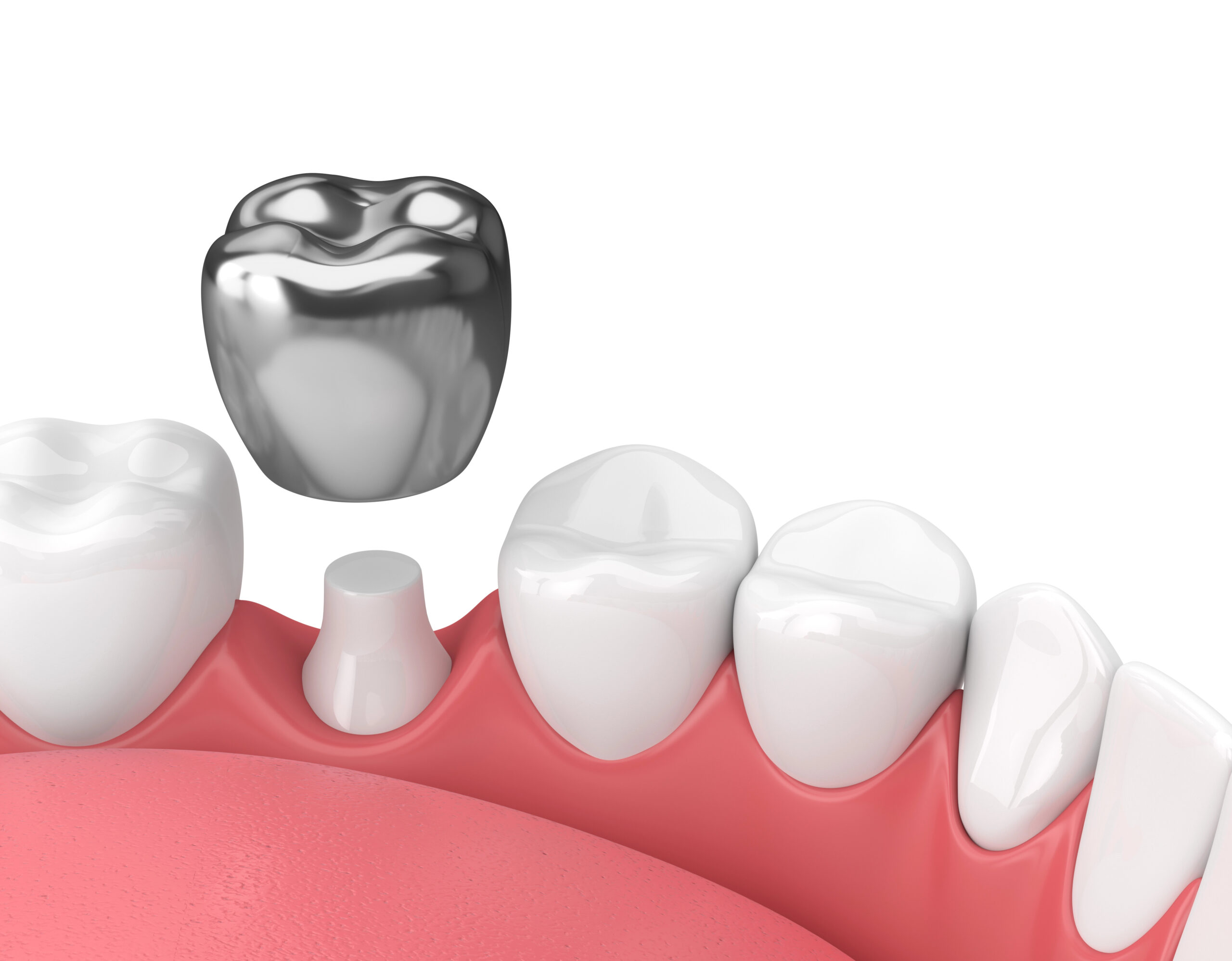Dental Blog - Fairfield, CA
Tips, Facts, And The
Latest In Dentistry

Dental Crown for Tooth Restoration: Bringing Back Function and Beauty

Dental Crown for Tooth Restoration: Types of Dental Crowns
Dental crown for tooth restoration is a versatile solution that can be tailored to meet various needs. There are several types of dental crowns available, each offering unique benefits. Metal crowns, known for their durability, are often used for molars that require strength to withstand chewing forces. Ceramic and porcelain crowns are popular for their natural appearance, making them ideal for front teeth where aesthetics are a priority. Additionally, porcelain-fused-to-metal crowns combine the strength of metal with the aesthetic appeal of porcelain, providing a balanced option for many patients.
For those interested in a more detailed understanding of the process, the Porcelain Dental Crown Procedure: What Patients Should Expect offers valuable insights. Resin crowns, while less durable, are often used as a temporary solution. Each type of dental crown for tooth restoration serves a specific purpose, ensuring that patients can find an option that aligns with their functional and aesthetic needs.
Materials Used in Crowns
Dental crowns for tooth restoration are crafted from a variety of materials, each offering unique benefits. Common materials include porcelain, ceramic, metal alloys, and composite resin. Porcelain and ceramic crowns are popular for their natural appearance, closely mimicking the color and translucency of natural teeth. Metal alloys, such as gold or platinum, provide exceptional strength and durability, making them ideal for molars that endure significant chewing pressure. Composite resin crowns offer a more affordable option while still providing a satisfactory aesthetic.
The choice of material for a dental crown for tooth restoration often depends on the location of the tooth, the patient’s preference, and the dentist’s recommendation. Each material has its own set of advantages, contributing to the overall function and beauty of the restored tooth. For more information on dental crowns and their applications, visit our page on Quality Dental Crowns Fairfield.
Benefits of Dental Crowns
Dental crowns for tooth restoration offer numerous advantages, enhancing both the function and aesthetics of damaged teeth. These crowns provide a durable solution that can withstand the pressures of daily chewing, ensuring long-lasting performance. Additionally, they are designed to match the natural color and shape of your teeth, seamlessly blending in with your smile. By covering and protecting weakened or decayed teeth, dental crowns help prevent further damage and maintain oral health. This restorative option not only improves the appearance of your teeth but also restores their full functionality, contributing to overall dental well-being.
Procedure for Crown Placement
The procedure for placing a dental crown for tooth restoration typically involves several key steps to ensure both functionality and aesthetics. Initially, the dentist will prepare the tooth by removing any decay and shaping it to fit the crown. An impression of the tooth is then taken to create a custom crown that matches the patient’s bite and natural tooth color. While waiting for the permanent crown, a temporary one is placed to protect the tooth. Once the custom crown is ready, it is carefully fitted and cemented onto the prepared tooth, restoring its function and appearance. For more information on dental procedures, visit Kuzma DDS Cosmetic & Implant Dentistry, your trusted Fairfield Dentist.
Longevity of Dental Crowns
When considering a dental crown for tooth restoration, one of the key factors to keep in mind is the longevity of these restorations. Dental crowns are designed to be durable and long-lasting, often providing years of reliable function and aesthetic appeal. The materials used in crafting dental crowns, such as porcelain, ceramic, or metal alloys, contribute to their resilience and ability to withstand the pressures of daily use. With proper care and maintenance, a dental crown for tooth restoration can effectively restore the natural look and function of a damaged tooth, making it a popular choice for those seeking a lasting solution.
Common Issues with Crowns
When considering a dental crown for tooth restoration, it’s important to be aware of some common issues that may arise. Over time, crowns can become loose or fall off due to wear and tear or improper fit. Additionally, patients might experience sensitivity to hot or cold temperatures if the crown does not fully cover the tooth. In some cases, the material of the crown can chip or crack, especially if made from porcelain. Gum irritation or recession around the crowned tooth is another potential concern, which can affect both the function and appearance of the restoration. Understanding these issues can help in maintaining the longevity and effectiveness of a dental crown for tooth restoration.
Cost Factors of Dental Crowns
When considering a dental crown for tooth restoration, understanding the cost factors involved is essential. The price of dental crowns can vary significantly based on several elements, including the material used, the complexity of the procedure, and the geographic location of the dental practice. Materials such as porcelain, metal, or a combination can influence the overall cost, as each offers different benefits and aesthetic qualities. Additionally, the expertise of the dental professional and the technology employed during the restoration process can also impact pricing. It’s important to consider these factors when evaluating the investment in a dental crown for tooth restoration.
Comparing Crowns and Other Restorations
When considering options for tooth restoration, it’s essential to understand the differences between a dental crown for tooth restoration and other restorative methods. Dental crowns are often chosen for their ability to cover and protect a damaged tooth, restoring both function and aesthetics. Unlike fillings, which are used for minor repairs, crowns provide a more comprehensive solution by encasing the entire tooth. Bridges, on the other hand, are typically used to replace missing teeth by anchoring to adjacent teeth, whereas crowns focus on restoring a single tooth’s integrity. Each method has its unique benefits, but a dental crown for tooth restoration stands out for its durability and natural appearance, making it a popular choice for those seeking to enhance their smile and oral health.
History of Dental Crowns
The dental crown for tooth restoration has a rich history that dates back thousands of years, showcasing humanity’s enduring quest to restore both function and beauty to damaged teeth. Ancient civilizations, such as the Etruscans, were among the first to use gold crowns, while the Egyptians utilized materials like ivory and bone. Over the centuries, advancements in dental technology have transformed the dental crown for tooth restoration into a sophisticated procedure, with modern crowns crafted from durable materials like porcelain and ceramic, offering a seamless blend with natural teeth. This evolution highlights the ongoing commitment to improving oral health and aesthetics through innovative dental solutions.
Conclusion
Discover how a dental crown for tooth restoration can enhance your smile’s function and beauty; call us today at 707-422-8404 or check out our Google reviews.





